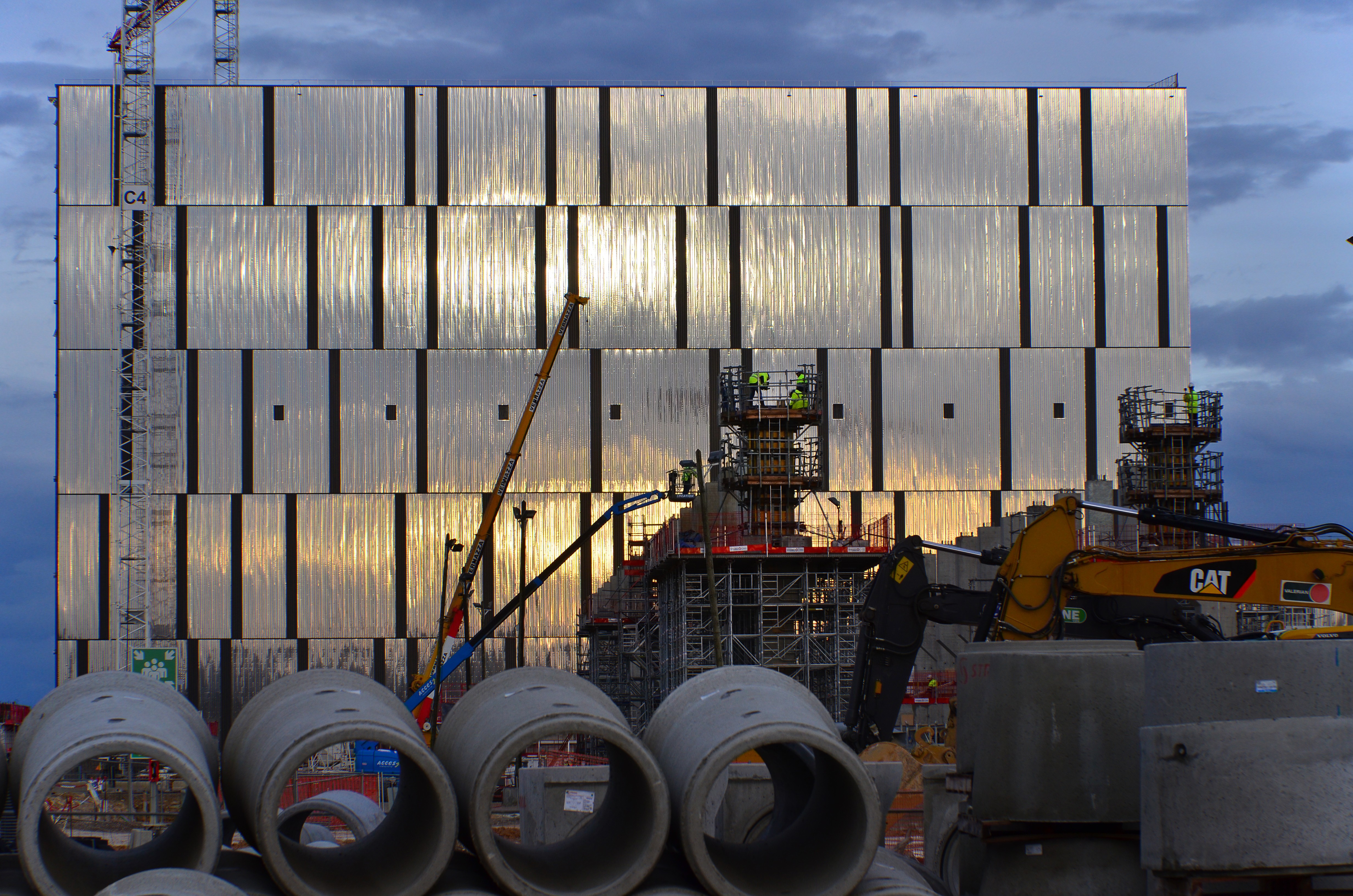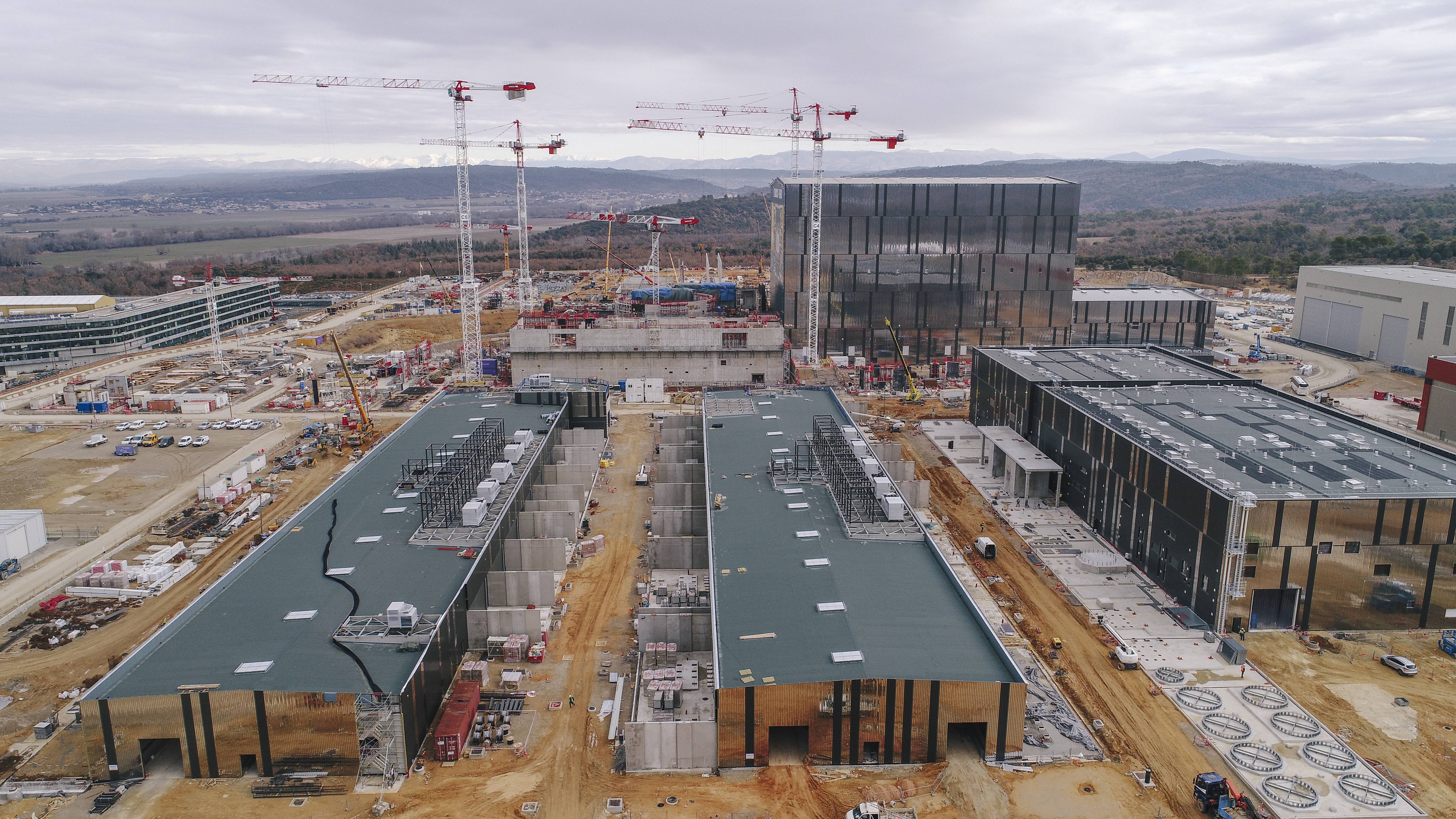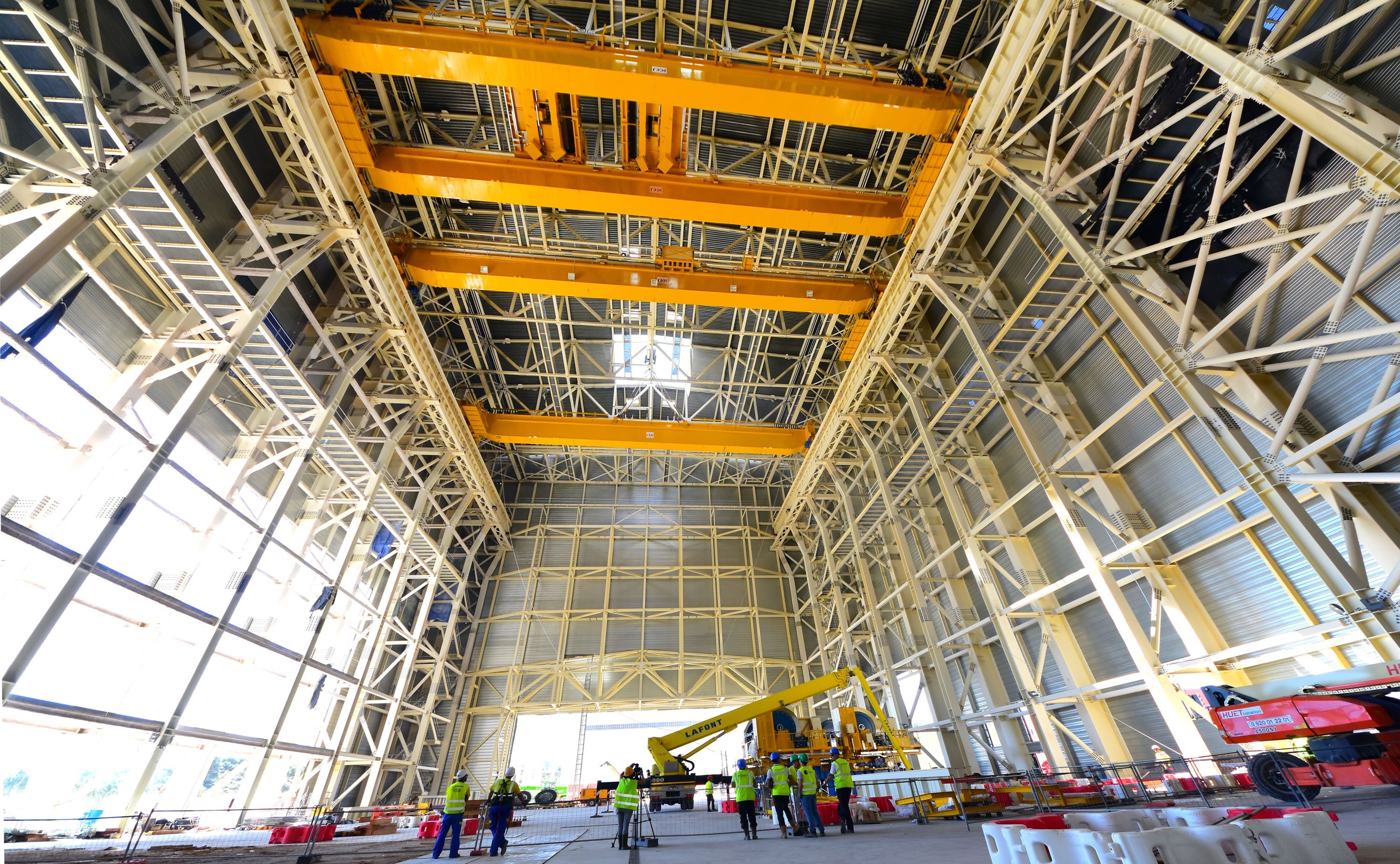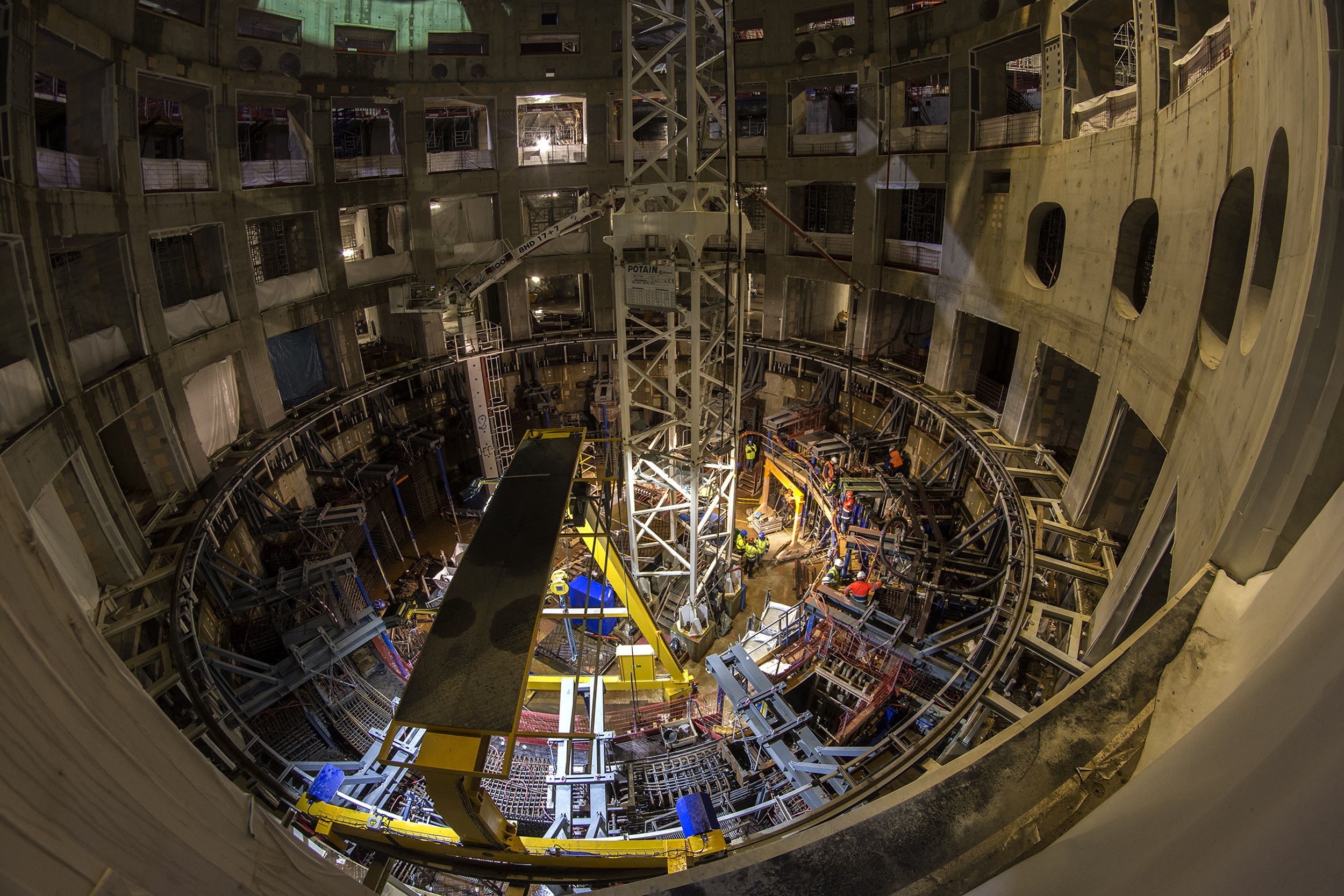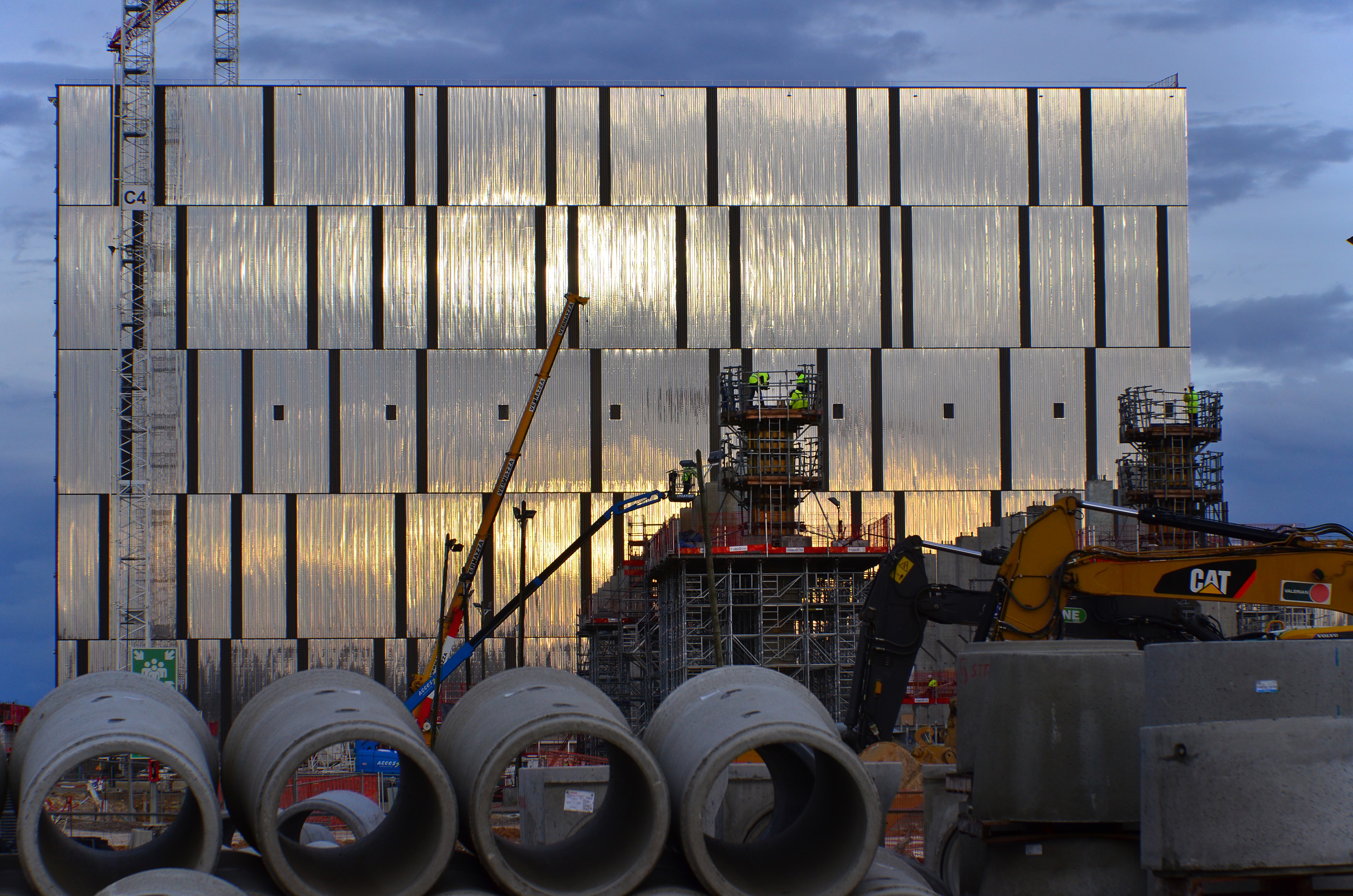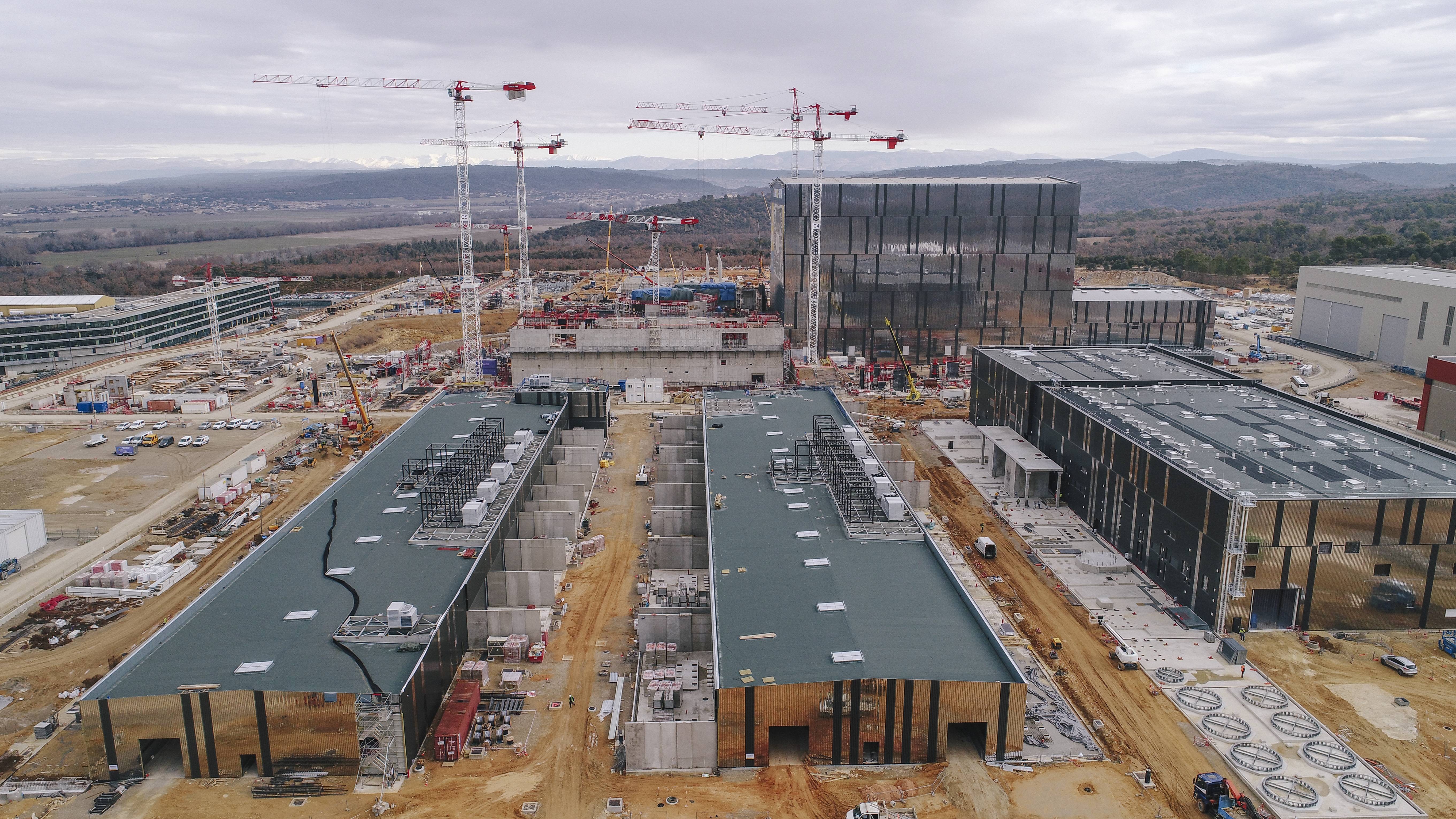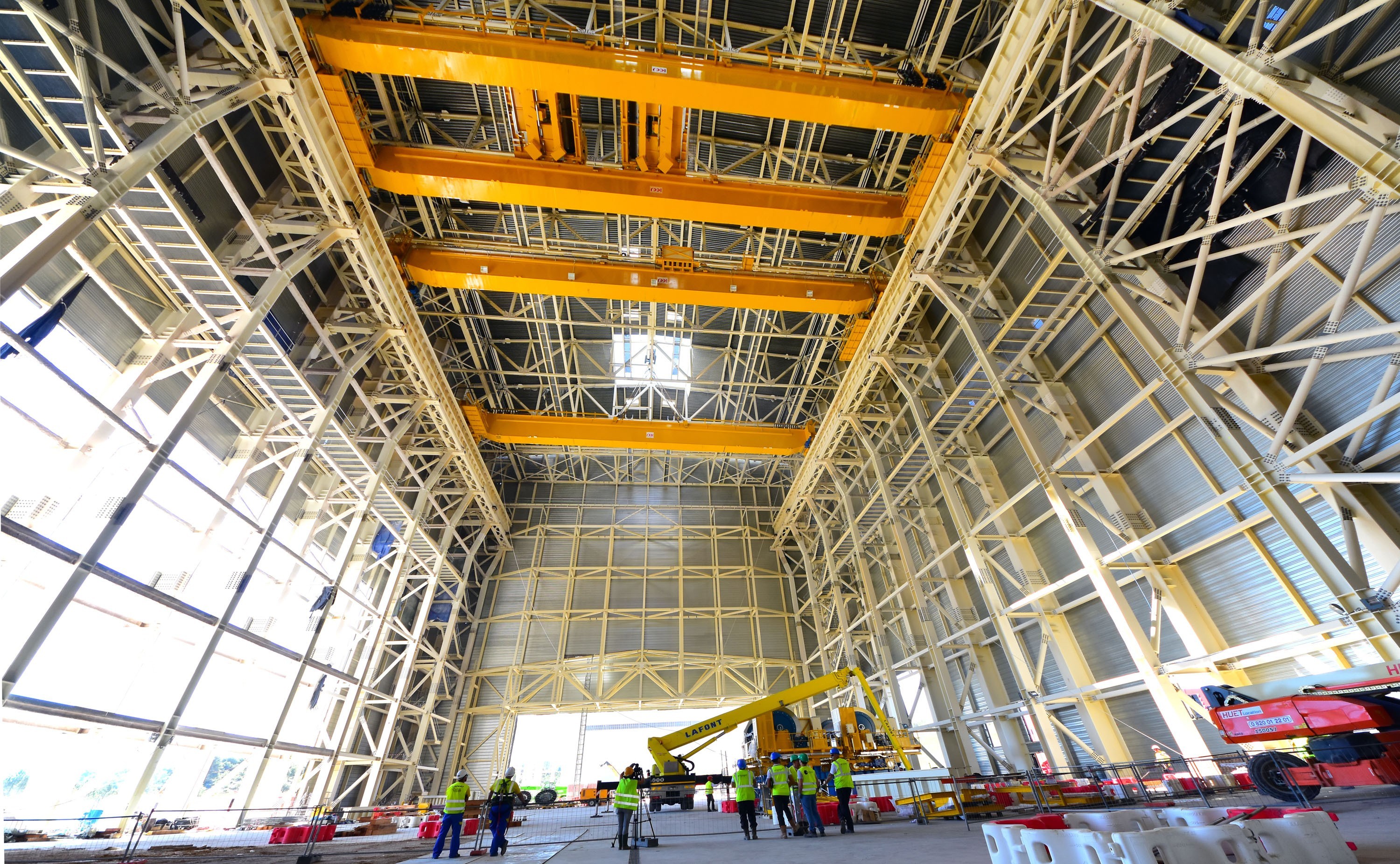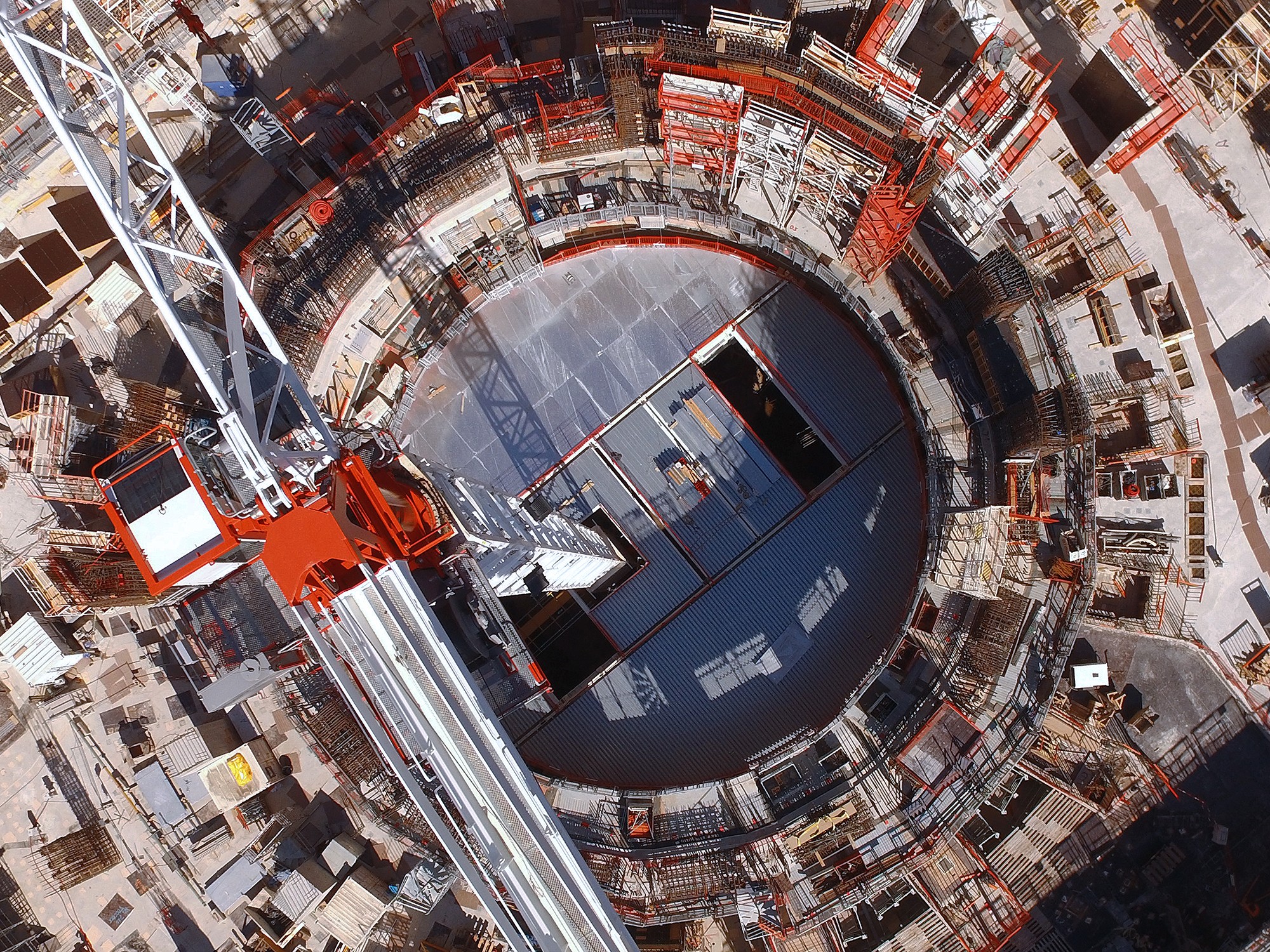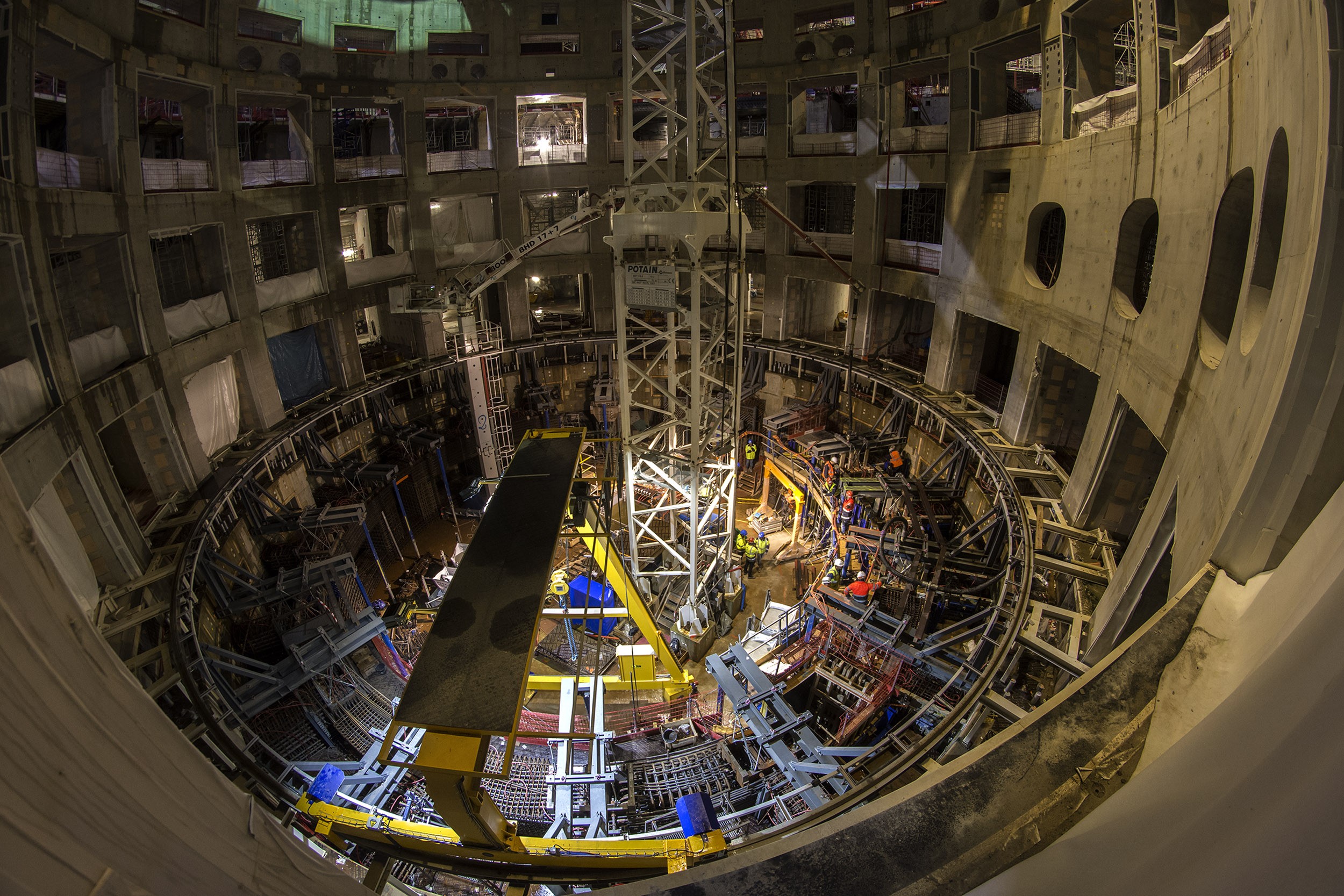
WHAT IS ITER
ITER is one of the most ambitious energy projects in the world today.

WHAT IS ITER
ITER is one of the most ambitious energy projects in the world today.

01
The experimental campaign
In southern France, 35 nations are collaborating to build the world's largest tokamak, a magnetic fusion device that has been designed to prove the feasibility of fusion as a large-scale and carbon-free source of energy based on the same principle that powers our Sun and stars.
ITER will be the first fusion device to maintain fusion for long periods of time. And ITER will be the first fusion device to test the integrated technologies, materials, and physics regimes necessary for the commercial production of fusion-based electricity.
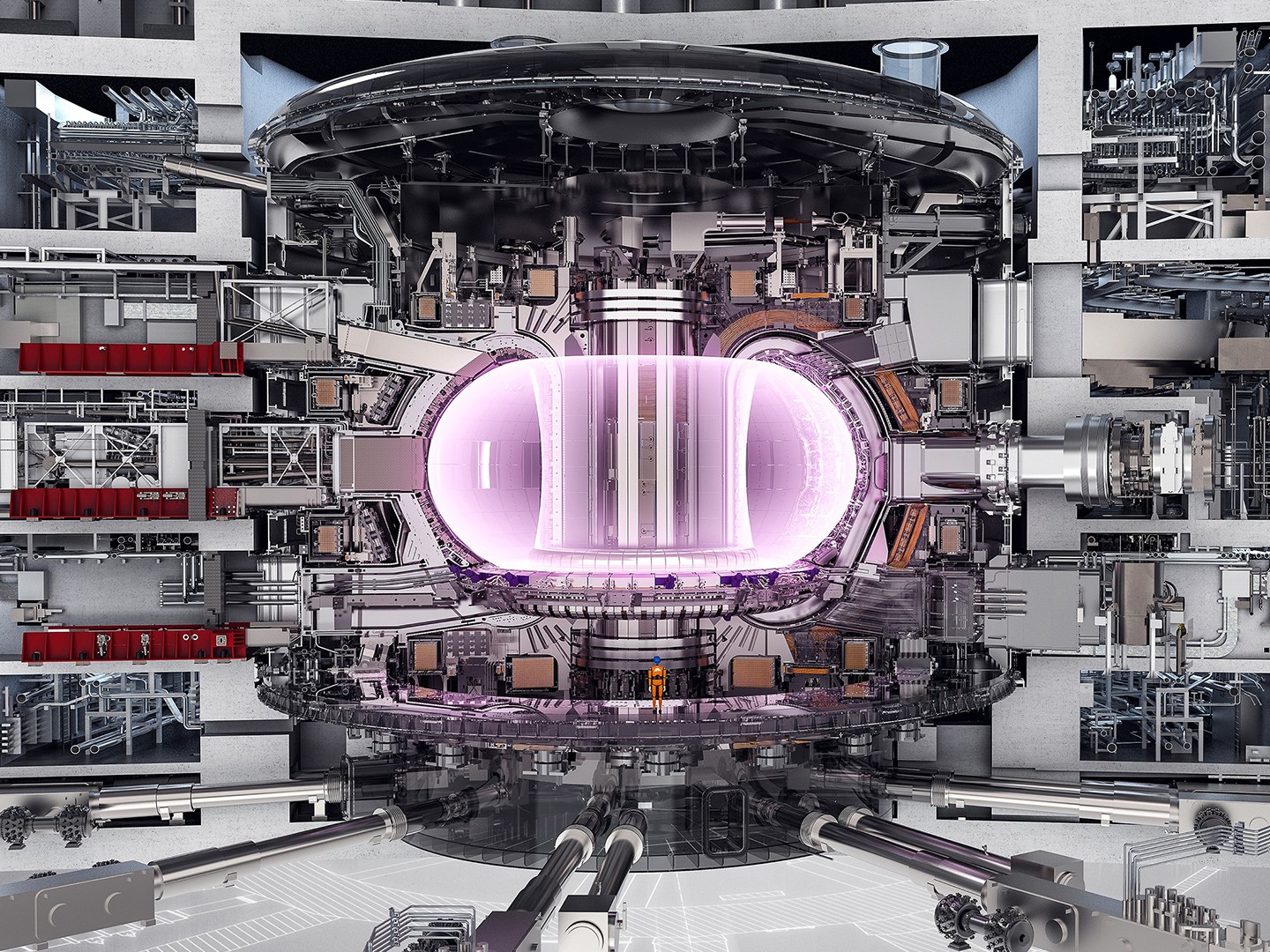
01
The experimental campaign
In southern France, 35 nations are collaborating to build the world's largest tokamak, a magnetic fusion device that has been designed to prove the feasibility of fusion as a large-scale and carbon-free source of energy based on the same principle that powers our Sun and stars.
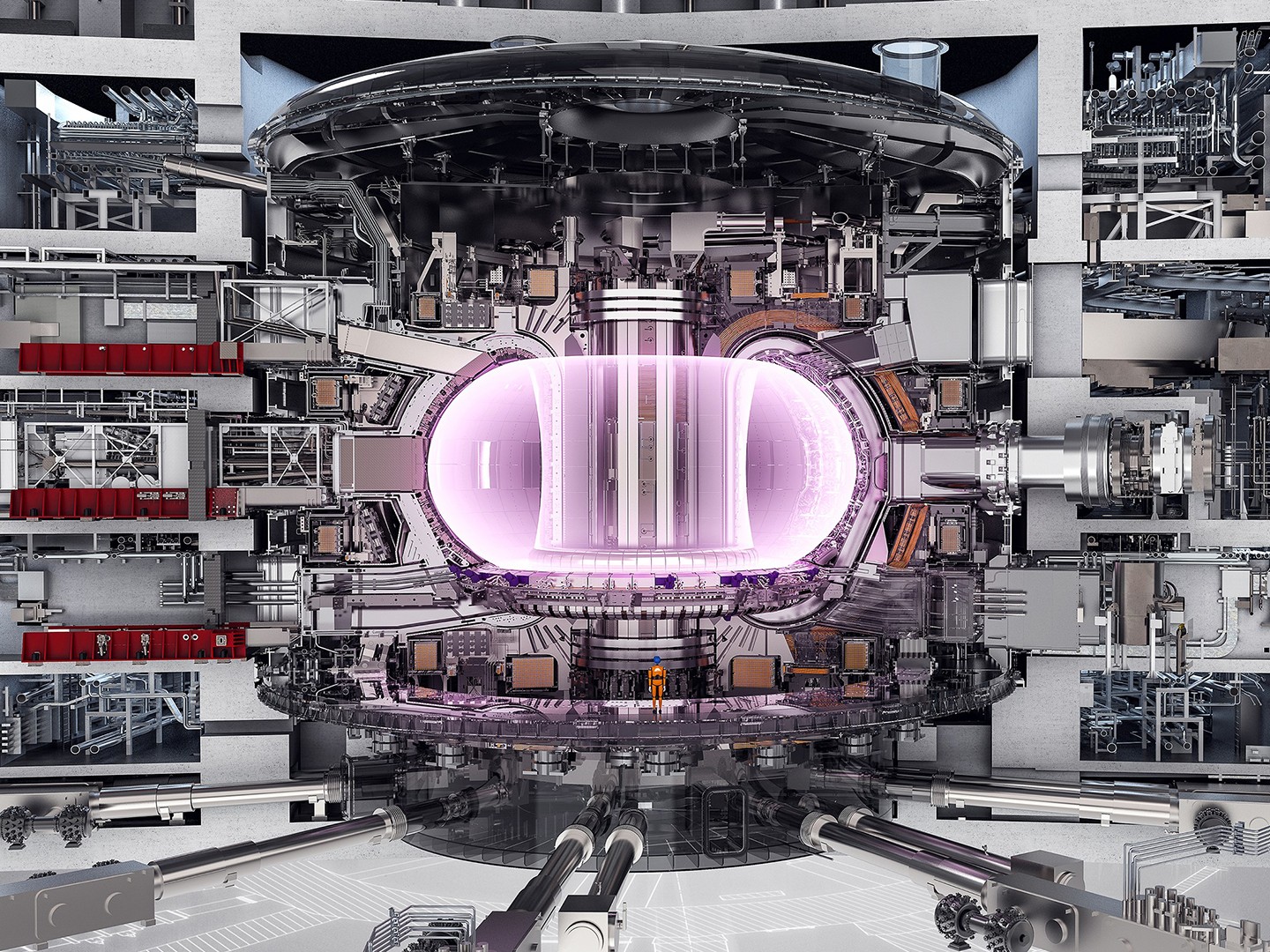
In southern France, 35 nations are collaborating to build the world's largest tokamak, a magnetic fusion device that has been designed to prove the feasibility of fusion as a large-scale and carbon-free source of energy based on the same principle that powers our Sun and stars.
02
What will ITER do?
The amount of fusion energy a tokamak is capable of producing is a direct result of the number of fusion reactions taking place in its core. Scientists know that the larger the vessel, the larger the volume of the plasma and therefore the greater the potential for fusion energy.
With ten times the plasma volume of the largest machine operating today, the ITER Tokamak will be a unique experimental tool, capable of longer plasmas and better confinement.
02
What will ITER do?
The amount of fusion energy a tokamak is capable of producing is a direct result of the number of fusion reactions taking place in its core. Scientists know that the larger the vessel, the larger the volume of the plasma and therefore the greater the potential for fusion energy.
With ten times the plasma volume of the largest machine operating today, the ITER Tokamak will be a unique experimental tool, capable of longer plasmas and better confinement.
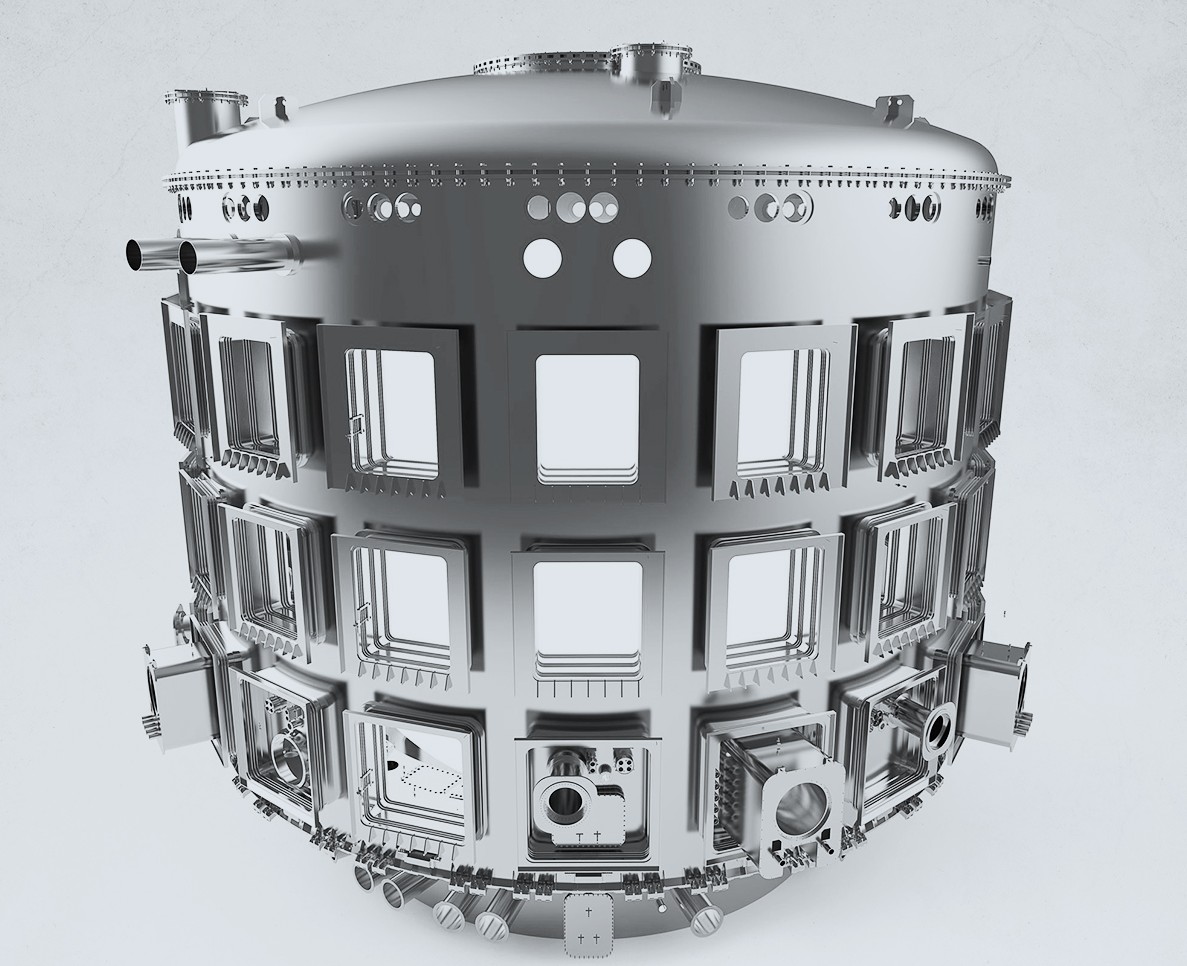
Produce 500 MW of fusion power
The world record for fusion power is held by the European tokamak JET. In 1997, JET produced 16 MW of fusion power from a total input heating power of 24 MW (Q=0.67). ITER is designed to produce a ten-fold return on energy (Q=10), or 500 MW of fusion power from 50 MW of input heating power. ITER will not capture the energy it produces as electricity, but—as first of all fusion experiments in history to produce net energy gain—it will prepare the way for the machine that can.
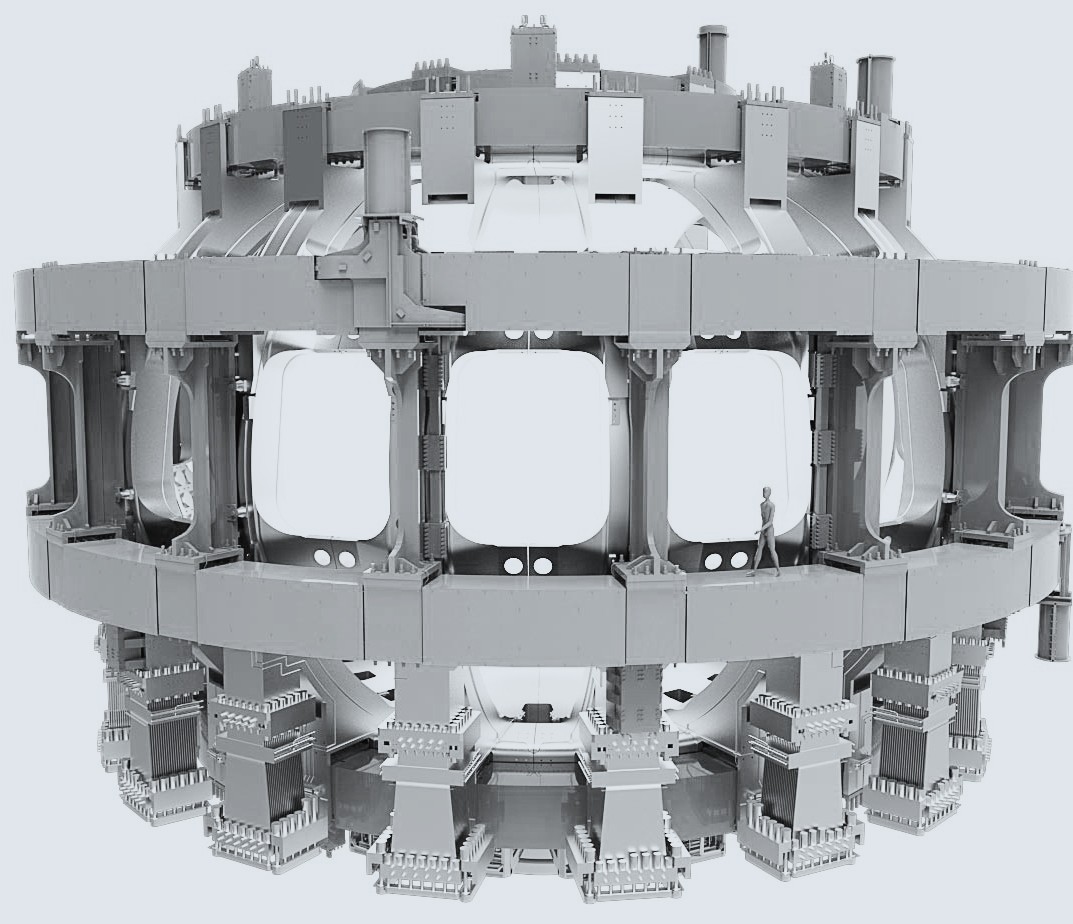
Demonstrate the integrated operation of technologies for a fusion power plant
ITER will bridge the gap between today's smaller-scale experimental fusion devices and the demonstration fusion power plants of the future. Scientists will be able to study plasmas under conditions similar to those expected in a future power plant and test technologies such as heating, control, diagnostics, cryogenics and remote maintenance.
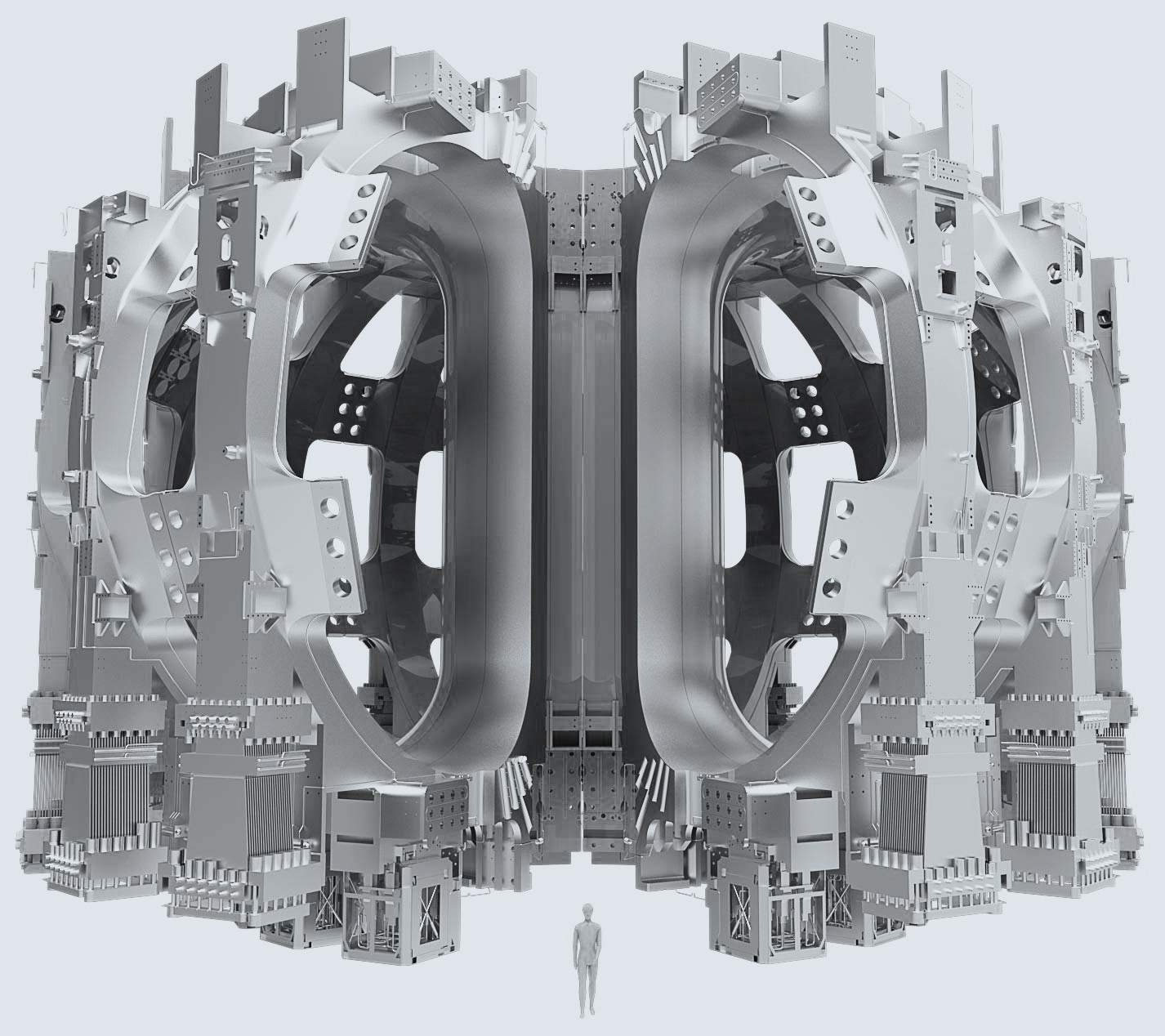
Test tritium breeding
One of the missions for the later stages of ITER operation is to demonstrate the feasibility of producing tritium within the vacuum vessel. The world supply of tritium (used with deuterium to fuel the fusion reaction) is not sufficient to cover the needs of future power plants. ITER will provide a unique opportunity to test mockup in-vessel tritium breeding blankets in a real fusion environment.
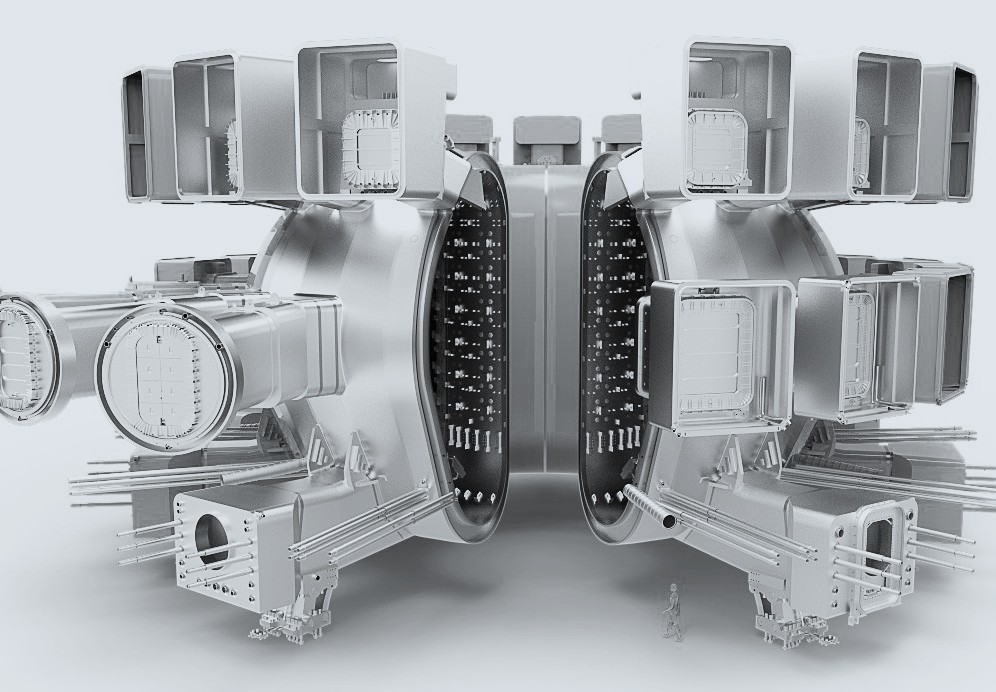
Demonstrate the safety characteristics of a fusion device
ITER achieved an important landmark in fusion history when, in 2012, the ITER Organization was licensed as a nuclear operator in France based on the rigorous and impartial examination of its safety files. One of the primary goals of ITER operation is to demonstrate the control of the plasma and the fusion reactions with negligible consequences to the environment.
Achieve a deuterium-tritium plasma in which the reaction is sustained through internal heating
Fusion research today is at the threshold of exploring a "burning plasma"—one in which the heat from the fusion reaction is confined within the plasma efficiently enough for the reaction to be sustained for a long duration. Scientists are confident that the plasmas in ITER will not only produce much more fusion energy, but will remain stable for longer periods of time.
03
What is fusion?
Fusion is the energy source of the Sun and stars. In the tremendous heat and gravity at the core of these stellar bodies, hydrogen nuclei collide, fuse into heavier helium atoms and release tremendous amounts of energy in the process.
Twentieth-century fusion science identified the most efficient fusion reaction in the laboratory setting to be the reaction between two hydrogen isotopes, deuterium (D) and tritium (T). The DT fusion reaction produces the highest energy gain at the "lowest" temperatures.
Three conditions must be fulfilled to achieve fusion in a laboratory: very high temperature (on the order of 150,000,000° Celsius);
sufficient plasma particle density (to increase the likelihood that collisions do occur); and sufficient confinement time (to hold the plasma, which has a propensity to expand, within a defined volume).
At extreme temperatures, electrons are separated from nuclei and a gas becomes a plasma—often referred to as the fourth state of matter. Fusion plasmas provide the environment in which light elements can fuse and yield energy.
In a tokamak device, powerful magnetic fields are used to confine and control the plasma.
03
What is fusion?
Fusion is the energy source of the Sun and stars. In the tremendous heat and gravity at the core of these stellar bodies, hydrogen nuclei collide, fuse into heavier helium atoms and release tremendous amounts of energy in the process.
Twentieth-century fusion science identified the most efficient fusion reaction in the laboratory setting to be the reaction between two hydrogen isotopes, deuterium (D) and tritium (T). The DT fusion reaction produces the highest energy gain at the "lowest" temperatures.
Three conditions must be fulfilled to achieve fusion in a laboratory: very high temperature (on the order of 150,000,000° Celsius);
sufficient plasma particle density (to increase the likelihood that collisions do occur); and sufficient confinement time (to hold the plasma, which has a propensity to expand, within a defined volume).
At extreme temperatures, electrons are separated from nuclei and a gas becomes a plasma—often referred to as the fourth state of matter. Fusion plasmas provide the environment in which light elements can fuse and yield energy.
In a tokamak device, powerful magnetic fields are used to confine and control the plasma.
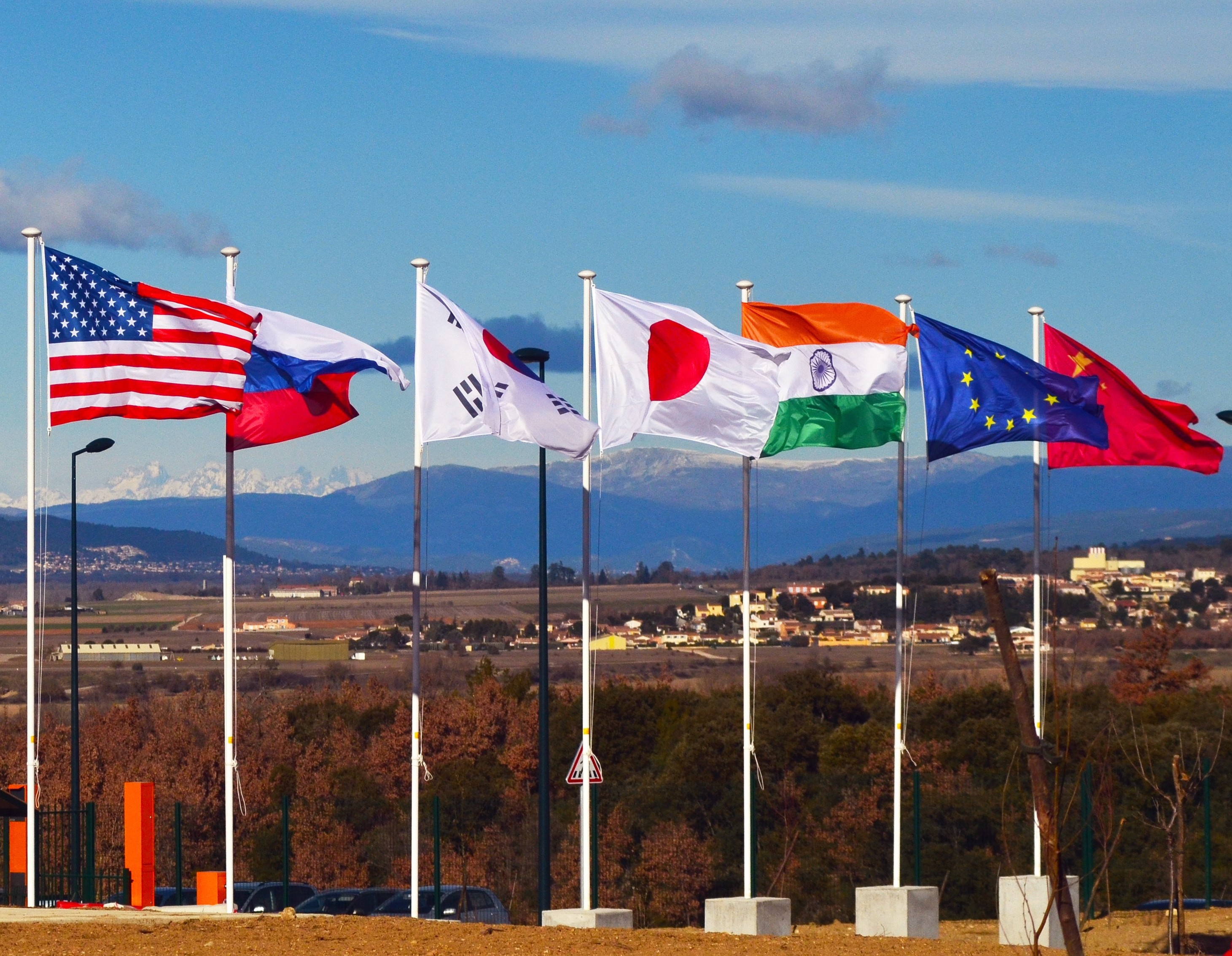
04
Globe-spanning collaboration of 35 nations.
The ITER Members China, the European Union, India, Japan, Korea, Russia and the United States have combined resources to conquer one of the greatest frontiers in science—reproducing on Earth the boundless energy that fuels the Sun and the stars.
Europe is responsible for the largest portion of construction costs (45.6 percent); the remainder is shared equally by China, India, Japan, Korea, Russia and the US (9.1 percent each). The Members deliver very little monetary contribution to the project: instead, nine-tenths of contributions will be delivered to the ITER Organization in the form of completed components, systems or buildings.
05
ITER Timeline
Throughout the ITER construction phase, the Council will closely monitor the performance of the ITER Organization and the Domestic Agencies through a series of high-level project milestones.
2005
Decision to site the project in France
2006
Signature of the ITER Agreement
2007
Formal creation of the ITER Organization
2007-2009
Land clearing and levelling
2010-2014
Ground support structure and seismic foundations for the Tokamak
2012
Nuclear licensing milestone: ITER becomes a Basic Nuclear Installation under French law
2014-2021
Construction of the Tokamak Building (access for assembly activities in 2019)
2010-2021
Construction of the ITER plant and auxiliary buildings for First Plasma
2008-2021
Manufacturing of principal First Plasma components
2015-2021
Largest components are transported along the ITER Itinerary
2018-2025
Assembly phase I
2024-2025
Integrated commissioning phase (commissioning by system starts several years earlier)
2025
First Plasma
2035
Deuterium-Tritium Operation begins
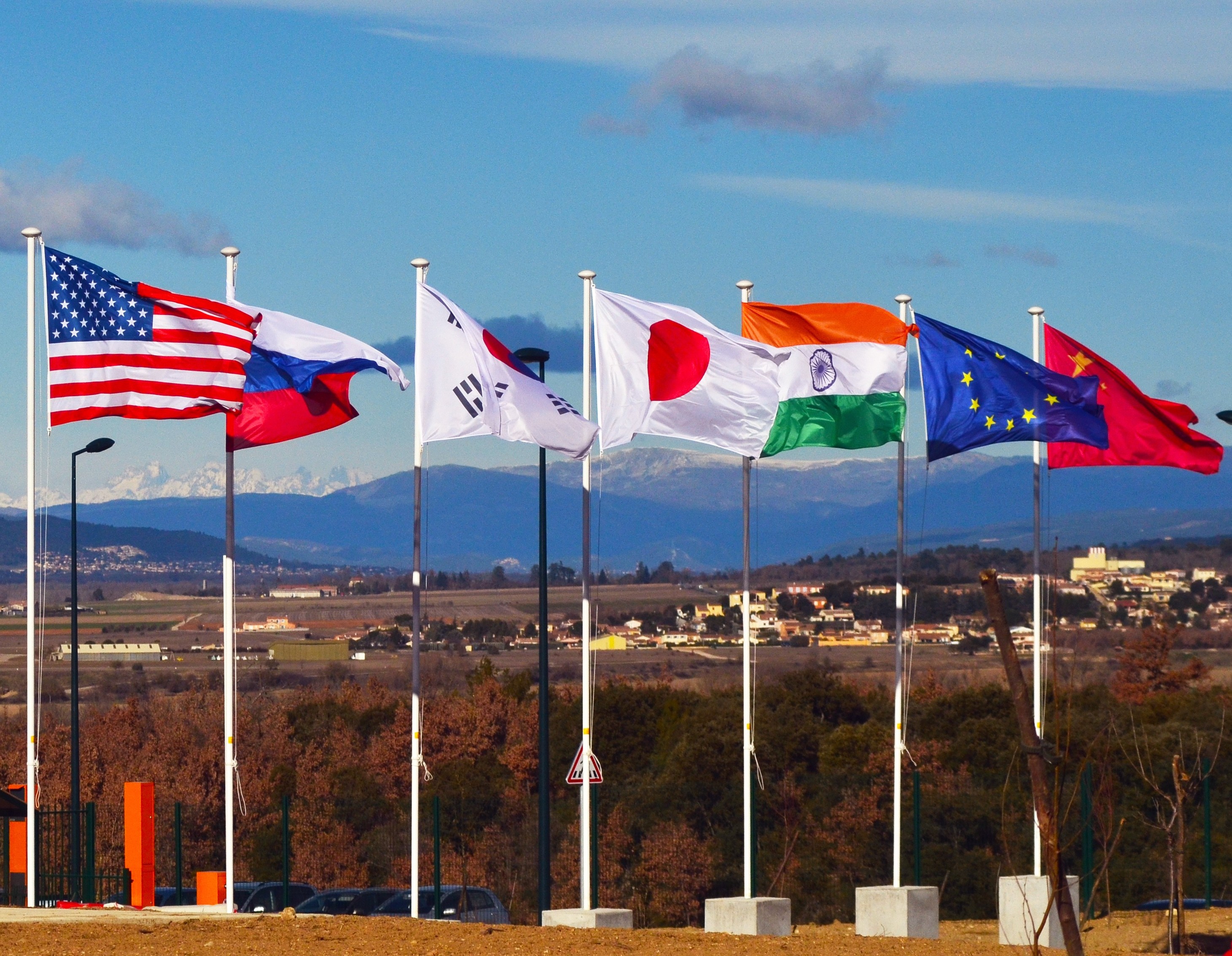
04
Globe-spanning collaboration of 35 nations.
The ITER Members China, the European Union, India, Japan, Korea, Russia and the United States have combined resources to conquer one of the greatest frontiers in science—reproducing on Earth the boundless energy that fuels the Sun and the stars.
Europe is responsible for the largest portion of construction costs (45.6 percent); the remainder is shared equally by China, India, Japan, Korea, Russia and the US (9.1 percent each). The Members deliver very little monetary contribution to the project: instead, nine-tenths of contributions will be delivered to the ITER Organization in the form of completed components, systems or buildings.
05
ITER Timeline
Throughout the ITER construction phase, the Council will closely monitor the performance of the ITER Organization and the Domestic Agencies through a series of high-level project milestones.
2005
Decision to site the project in France
2006
Signature of the ITER Agreement
2007
Formal creation of the ITER Organization
2007-2009
Land clearing and levelling
2010-2014
Ground support structure and seismic foundations for the Tokamak
2012
Nuclear licensing milestone: ITER becomes a Basic Nuclear Installation under French law
2014-2021
Construction of the Tokamak Building (access for assembly activities in 2019)
2010-2021
Construction of the ITER plant and auxiliary buildings for First Plasma
2008-2021
Manufacturing of principal First Plasma components
2015-2021
Largest components are transported along the ITER Itinerary
2018-2025
Assembly phase I
2024-2025
Integrated commissioning phase (commissioning by system starts several years earlier)
2025
First Plasma
2035
Deuterium-Tritium Operation begins



